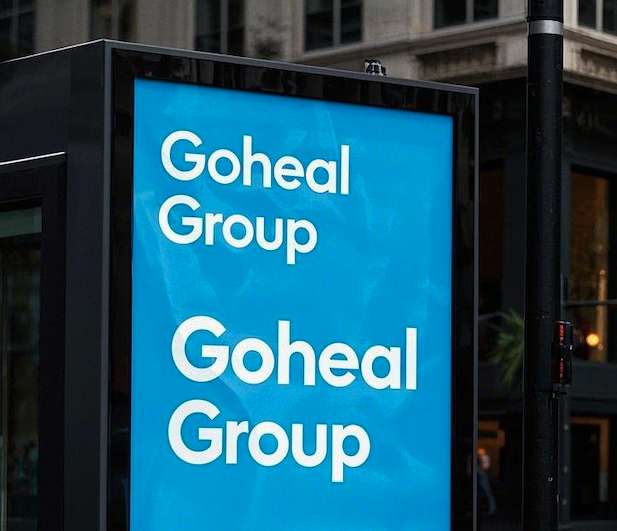"Great sounds are silent, and great elephants are invisible." The tide of the capital market is rolling in. Some people take advantage of the situation to turn over, while others sink and lose their rudder. Is the merger and acquisition of listed companies a "capital game" in a gold-rimmed coat, or an "industry redemption" that transfuses blood to the industry and fights back? This proposition is destined to have no standard answer, but it is worth all investors and entrepreneurs to explore.
From ChatGPT sweeping the entire network and triggering AI investment fever, to the equity logic behind the "palace fight" of the OpenAI board of directors, the capital market in 2025 reminds us again and again: capital is not a cold formula, but a narrative script full of variables. In this script, the merger and acquisition of listed companies is like the most fascinating chapter-there are climaxes, reversals, the victory of believers, and the fall of speculators.

American Goheal M&A Group
1. Mergers and acquisitions, a capitalized "soul cutting"
"Dancing on the edge of a knife" is the definition of mergers and acquisitions by many industry insiders. Indeed, especially in the highly exposed arena of listed companies, any capital action is put under the microscope. Once out of control, it will be a "failure sample" watched by the whole network.
Once upon a time, A-shares were swept by a whirlwind of "shell resources", and many companies on the verge of delisting were "resurrected" overnight through shell companies and reorganization. But "changing shells" does not mean "changing lives", nor is it a panacea for a complete transformation. Many companies are still in trouble after reorganization, and even fall into a vicious cycle of "reorganization-explosion-reorganization", becoming "living fossils" in capital narratives.
Another type of company uses mergers and acquisitions as a scalpel to achieve industrial expansion and structural optimization. For example, a listed company that originally only engaged in traditional energy quickly entered the new energy track through the acquisition of a new material company, and obtained government subsidies and market valuation double-boosting - such cases are often regarded as a model of "industrial synergy", and have become a successful sample frequently mentioned by Goheal in consulting projects in the Asia-Pacific region.
2. The story must be told beautifully and down-to-earth
In today's capital market, narrative power is almost combat power. Mergers and acquisitions are essentially a contest of how to tell a good story and have the ability to cash in. Interestingly, the bigger the mergers and acquisitions, the more they rely on "storytelling" to stabilize morale and gain recognition. But if the story is too mysterious, it will not be implemented, and the capital market will eventually vote with its feet.
"M&A is not about telling fantasy novels, but about writing business plans." As Goheal mentioned in an internal memo to customers in early 2025, "a truly good merger is one that has strategic gravity, financial logic, and flexibility in execution." These three elements are indispensable. Otherwise, no matter how loud the brand is or how far the vision is, it cannot withstand the "three soul questions" of an inquiry letter.
Just like the listed company that claims to "build the first domestic AI platform", it acquired three AI startups whose profit records were not stable last year. The capital market was optimistic about it and the stock price doubled. But it didn't last for two quarters. The large amount of goodwill impairment generated by the financial merger directly hit the net assets. The board of directors was replaced several times, and the shareholders wanted to cry without tears.
3. Mergers and acquisitions are not a "quick money game" but a "slow stew"
Many people think that mergers and acquisitions are a shortcut for companies to "overtake on a curve", but in fact, mergers and acquisitions are more like a systematic project. Once started, there is no turning back. From due diligence, valuation, negotiation, to coordination, integration, and delivery, every link can "block" the entire project.
Especially for listed companies, a merger and acquisition involves not only assets and personnel, but also regulatory compliance, public opinion, and shareholder games. As shown in a cross-border merger and acquisition case that Goheal recently participated in, even if the transaction logic is clear, if it involves sensitive areas such as data export and energy control, regulatory review is a "minefield" that cannot be bypassed.
In addition, many companies lack a deep understanding of the target company before the merger and acquisition, and lack strategic assessment of corporate culture, technical architecture, and even personnel relations, resulting in "unsuitable" in the later integration stage, and the coordination efficiency is reduced. This kind of problem not only burns money, but is also likely to burn the credit of management and burn the confidence of shareholders.
4. Who is the winner? Who is the spectator?
From the perspective of investors, it is not complicated to judge whether a merger is a "value investment" or a "short-term speculation": the key is to see whether the result "fulfills the promise". You can give the story some time, but you cannot accept a promise that is never fulfilled.
From the perspective of entrepreneurs, it is more worth thinking about: Do you regard mergers and acquisitions as a medicine to extend the life cycle, or try to use capital operations to cover up the fig leaf of operational failure? The difference between the two determines whether a merger and acquisition is a life of death or a poison to quench thirst.
As Goheal summarized: capital can amplify value and risk. But the real masters never speak with "amplifiers", but rely on fundamentals and cashability.
5. Conclusion: The double-edged sword of capital, the mirror of the enterprise
"Mergers and acquisitions are a ritual of capital and a mirror of the enterprise." Behind the seemingly glorious announcement, there are many high-risk bets and turbulent negotiations. Behind a transaction, it may be the rebirth of an industry, or it may be the fall of another shareholder.

Goheal Group
So, here comes the question - do you think that in today's A-share market, more mergers and acquisitions are industrial upgrades of "win-win value" or financial skills of "valuation manipulation"? Which sub-sectors do you think will become the main battlefield for mergers and acquisitions in the future? Welcome to leave a message in the comment area to discuss, and let's dismantle the "double life" of capital together.
[About Goheal] Goheal is a leading investment holding company focusing on global mergers and acquisitions, deeply cultivating the three core business areas of listed company control acquisition, listed company mergers and acquisitions and restructuring, and listed company capital operation. With deep professional strength and rich experience, it provides enterprises with full life cycle services from mergers and acquisitions to restructuring and capital operation, aiming to maximize corporate value and achieve long-term benefit growth.